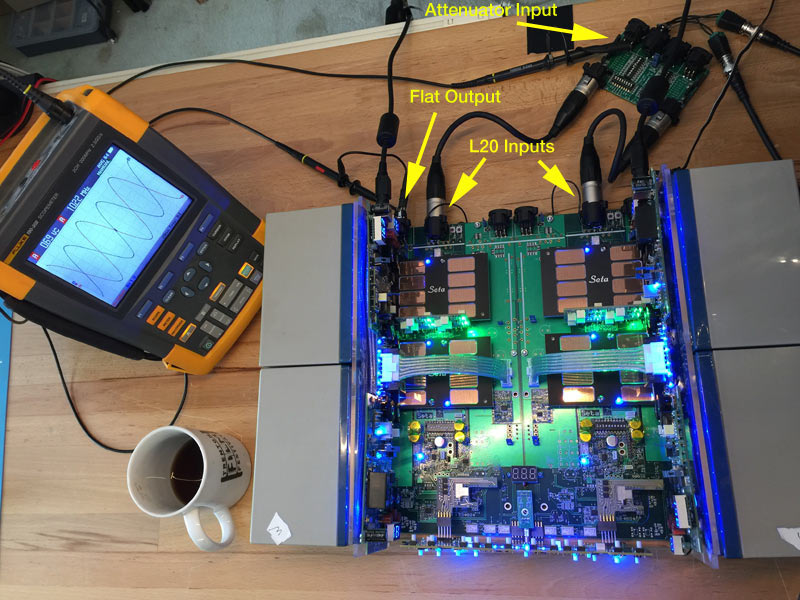|
|

|
|
Seta L20 - Large-Signal Square Wave, 0.1 Hz to 1 MHz This is a test using large-output-amplitude (ca. 17 volts peak to peak) square waves from 0.1 Hz to 1 MHz. Input level and preamplifier gain were adjusted to give an output level of approximately 17 volts peak to peak. The apparent minor variation in output level is due to the resolution limit of the 8-bit scope's ADC and measurement noise. This is an extreme torture test. Higher amplitude square waves also are handled well, but aren't a useful test since clipping cannot be discerned easily with square waves. To view the ca. 6 dB larger (36 volt peak to peak) output capability of the L20, see the large-signal sine wave measurements.
0.1 Hz
The above proves the L20 is direct-coupled; no droop in the square wave from low-frequency roll-off. Each half-cycle of the square wave has a duration of 5 seconds. 1 Hz
10 Hz
100 Hz
1 kHz
10 kHz
100 kHz
1 MHz (1000 kHz)
At first glance, the above 1 MHz large-signal square wave test appears ugly. It's actually quite remarkable! It demonstrates the L20's behavior during an extreme high-frequency overload condition. To properly design and understand an amplifier one must understand its behavior under overload conditions, not just when presented with normal signals. Ideally, a manufacturer should show a potential customer what conditions it takes to make the amplifier reach its limits.
Links to other Seta L20 measurements
|